Comark FG80AK Handleiding
Comark
Voedsel thermometer
FG80AK
Bekijk gratis de handleiding van Comark FG80AK (4 pagina’s), behorend tot de categorie Voedsel thermometer. Deze gids werd als nuttig beoordeeld door 63 mensen en kreeg gemiddeld 4.8 sterren uit 32 reviews. Heb je een vraag over Comark FG80AK of wil je andere gebruikers van dit product iets vragen? Stel een vraag
Pagina 1/4

!Kerosene Spirit Filled Glass Thermometer
Safety Data Sheet
Effective date: April 1, 2016 According to 29 CFR 1910:1200 and GHS Rev. 3 Page 1 4 of !
SECTION 1: Identification of the substance/mixture and of the Manufacturer
Chemical Name: - -6) Kerosene (CAS No: 08008 20
Manufacturer Product Name: Kerosene Spirit Filled Glass Thermometer
Recommended uses of the chemical/product: Kerosene dyed with a red aniline dye is the thermometric fluid in a kerosene spirit filled
glass thermometer. The dyed expands or contracts with change in temperature. The thermometer will have approximately 2 cc kerosene
of kerosene.
Manufacturer Details: Emergency Telephone Number:
Miller-Weber of Texas -Chem Tel, Inc. (Contract Number: MIS0003159)
1- - - 6952 Lawndale Street 800 255 3924
Houston, TX 77023
- -713 926 2623 Fax: 713 926 7736- -
SECTION 2: Hazards Identification
The amount of kerosene cc. This section identifies the hazards of the substance, in a single thermometer is approximately two
without regard of amount of kerosene present in the finished product.
Hazard Classification of the chemical -(GHS US Hazard Pictograms):
!
GHS0 GHS0 GHS08 7 9
Signal word (GHS-US): Danger
Hazard statements (GHS US):- H 7 – 22 Combustible liquid.
H – 304 May be fatal if swallowed and enters airways
H – 315 Causes skin irritation
H411 – Toxic to aquatic life with long lasting effects.
Precautionary statements (GHS- US): – P210 Keep away from heat, sparks, open flames, hot surfaces. – No smoking
– P264 Wash skin, hands thoroughly after handling
– P273 Avoid release to the environment
– P280 Wear eye protection, protective clothing, protective gloves, face mask
– P301+P310 IF SWALLOWED: immediately call a POISON CENTER or doctor/physician
P302 - +P352 IF ON SKIN: Wash with plenty of soap and water.
P331 – If swallowed, do NOT induce vomiting
P332+P313 – If skin irritation occurs: Get medical advice/attention
P362 – Take off contaminated clothing and wash before reuse.
P370+P378 – - In case of fire: Use carbon dioxide (CO2), powder, alcohol resistant foam for extinction
P391 – Collect spillage.
5 - P403+P23 Store in a well- ventilated place. Keep cool.
- P405 Store locked up
– P501 Dispose of contents/container to comply with local, state and federal regulations
NFPA/HMIS Ratings (0- - :4) (Non GHS) 2 2 0 Health: , Flammability: , Reactivity: , PPG: See Section 8
SECTION 3: Composition/Information on Ingredients
Name
Product Identifier
%
GHS-US Classification
Kerosine
CAS No. 08008- -6 20
100
Flam. Liq. 4 7 , H22
Skin Irrit. 2, H315
Asp. Tox. 1, H304
Aquatic Chronic 2, H411
See Section 16 for full text of H- phrases
SECTION 4: First aid measures
The first aid measures described in this section are for exposure to kerosene kerosene, regardless of the quantity of the involved in the
exposure. The first aid measures below come from the Safety Data Sheets of our bulk kerosene suppliers.
Description of first aid measures
General: Consult a physician. Show this safety data sheet to the doctor in attendance. Move out of dangerous area.
After inhalation: Move person into fresh air. If not breathing, give artificial respiration. Consult a physician.
After skin contact: Wash off with soap and plenty of water. Consult a physician.
After eye contact: Flush eyes with water as a precaution.
After swallowing (ingestion): Do NOT induce vomiting. Never give anything by mouth to an unconscious person. Rinse mouth with water.
Consult a physician.
Most important symptoms and effects, both acute and delayed: The most important known symptoms and effects are described in Section 2 and/or in
section 11.
Indication of any immediate medical attention and special treatment needed: No data available.

!Kerosene Spirit Filled Glass Thermometer
Safety Data Sheet
Effective date: April 1, 2016 According to 29 CFR 1910:1200 and GHS Rev. 3 Page 2 4 of !
SECTION 5: Firefighting measures
Extinguishing media
Suitable extinguishing agents: Use water spray, alcohol- resistant foam, dry chemical or carbon dioxide.
Unsuitable extinguishing media: None identified, but avoid heavy water stream.
Special hazards arising from the substance or mixture: Nature of decomposition products not known.
Advice to firefighters: Wear self-contained breathing apparatus for firefighting, if necessary.
SECTION 6: Accidental release measures
Personal precautions, protective equipment and emergency procedures
General Measures: If thermometer breaks, wipe up liquid with disposable wiping cloth. Allow to dry under a fume hood and discard or discard
into spark and explosion proof waste receptacle.
Protective Equipment: See Section 8.
Emergency procedures: Keep upwind. Keep away from engines. No smoking. No flames or sparks. Wash contaminated clothing.
Environmental precautions Prevent leakage or spillage into drains and sewers. Discharge into the environment must be avoided.
Methods and material for containment and cleaning up Carefully clean up broken glass. Wipe up liquid kerosene spirit immediately after putting on
protective equipment.
Reference to other sections For disposal see section 13.
SECTION 7: Handling and storage
Precautions for safe handling
Handle and store thermometer in such a way to prevent breakage. If thermometer breaks will be released. Do not handle until all , kerosene
safety precautions have been read and understood. kin and eyes. Avoid inhalation of vapor or mist. Avoid contact with s Wash hands and other
exposed areas with mild soap and water before eating, drinking or smoking and when leaving work. Provide good ventilation in case of breakage.
Supply spark and explosion proof waste receptacle, as necessary.
Hygiene measures
Wash hands and other exposed areas with mild soap and water before eating, drinking or smoking and when leaving work. Do not eat, drink or
smoke when using this product.
Conditions for safe storage, including any incompatibilities
Store thermometer in such a way to prevent breakage. Store away from direct sunlight, sources of intense heat, or where freezing is possible.
Store away from materials incompatible with kerosene secure kerosene (see Section 10 of this SDS). Store in area that will if thermometer is
broken in storage. Inspect all incoming containers with thermometers carefully for breakage. If breakage is suspected, use proper protective
equipment (see Section 8 of this SDS) and containment. Store and handle in well ventilated areas. .
SECTION 8: Exposure controls/personal protection
Control Parameters:
Kerosene (Kerosine) CAS No. 08008- -6 20
Remarks
USA
ACGIH
ACGIH TLV
200 mg/m3
Central Nervous System impairment; Upper Respiratory Tract irritation; Skin irritation; Application
restricted to conditions in which there are negligible aerosol exposures; Confirmed animal
carcinogen with unknown relevance to humans; Danger of cutaneous absorption varies.
USA
NIOSH
NIOSH TWA
100 mg/m3
A refined petroleum solvent (predominantly C9-C16), which typically is 25% normal paraffins, 11%
branched paraffins, 30% monocycloparaffins, 12% dicycloparaffins, 1% tricycloparaffins, 16%
monomuclear aromatics & 5% dinuclear aromatics.
Appropriate Engineering controls
Emergency eye wash fountains and safety showers should be available in the immediate vicinity of any potential exposure. Ensure adequate
ventilation. Handle in accordance with good industrial hygiene and safety practice. Wash hands before breaks and at the end of the workday.
Personal Protective Equipment (if thermometer breaks)
If thermometer breaks, avoid all unnecessary exposure. Gloves. Protective clothing. Safety glasses or goggles. Respiratory protection if
concentration in air is above the exposure limits .
!
Hand Protection: Handle with gloves. Nitrile rubber give good protection. Gloves must be inspected prior to use. Use proper glove removal
technique (without touching glove’s outer surface) to avoid skin contact with this product. Dispose of contaminated gloves after use in accordance
with applicable laws and good laboratory practices. Wash and dry hands.
Eye Protection: Safety glasses. Use equipment for eye protection tested and approved under appropriate government standards such as
NIOSH (US) Use a face shield if misting or large quantities of liquid splashing is expected..
Respiratory Protection: Where risk assessment shows air- - -purifying respirations are appropriate use a full face respirator with multi purpose
combination (US) respirator cartridges as a backup to engineering controls. If the respirator is the sole means of protection, use a full-face
supplied air respirator. Use respirators and components tested and approved under appropriate government standards such as NIOSH (US).
Skin and Body Protection: Complete suit protecting against chemicals. The type of protective equipment must be selected according to the
concentration and amount of the dangerous substance at the specific workplace.
Control of environmental exposure: Prevent further leakage or spillage if safe to do so. Do not let product enter drains. Discharge into the
environment must be avoided.

!Kerosene Spirit Filled Glass Thermometer
Safety Data Sheet
Effective date: April 1, 2016 According to 29 CFR 1910:1200 and GHS Rev. 3 Page 3 4 of !
SECTION 9: Physical and chemical properties
Appearance (physical state, color)
Red dyed liquid
Explosion Limit (upper/lower)
5% (V)/0.7% (V)
Odor
No data available
Vapor pressure
0.31 hPa at 20 °C
Odor threshold
No data available
Vapor density
No data available
pH value
No data available
Relative density
0.800 g/cm3 at 5 °C 1
Melting/Freezing point
No data available
Solubilities (at 25 °C)
No data available
Boiling point/ Boiling range
175 325 °C-
Partition coefficient (n- octanol/water)
No data available
Flash point
70 °C
Auto/Self- ignition temperature
No data available
Relative Evaporation rate (butylacetate=1)
No data available
Decomposition temperature
No data available
Flammability (solid, gaseous)
No data available
Viscosity
No data available
Upper/Lower flammability limits
5% (V)/ 0.7% (V)
Surface tension
32 mN/m at 20 °C
SECTION 10: Stability and reactivity
Reactivity: No data available.
Chemical stability: Stable under normal conditions of use. Stable under recommended storage conditions.
Possibility of hazardous reactions: No data available.
Conditions to avoid: Intact thermometer should not be exposed to hydrofluoric acid. Avoid Excessive heat, sources of ignition, direct sunlight and
extremely high or low temperatures. If broken, avoid materials incompatible with kerosene.
Incompatible materials: Strong oxidizing agents, strong bases, strong acids, amines.
Hazardous decomposition products: Other decomposition products- no data available. In the event of fire: see Section 5.
SECTION 11: Toxicological information
Acute toxicity: Not classified
Kerosene - -6 (Kerosine) CAS No. 08008 20
LD50 oral rat
2835 mg/kg Remarks: Behavioral: Muscle weakness. Lungs, Thorax, or Respiration: Respiratory stimulation. Endocrine:
Hypoglycemia.
dermal rabbit
Irritating to skin – 24 h (Draize Test). No other data available.
LD50 inhalation rat (mg/l)
No data available.
Skin corrosion/irritation: Irritating to skin.
Serious eye damage/irritation: No data available.
Respiratory or skin sensitization: No data available.
Germ cell mutagenicity: No data available.
Carcinogenicity: No component of this products present at levels greater than or equal to 0.1% is identified as probable, possible or confirmed human
carcinogen by IARC, NTP or OSHA.
Reproductive toxicity: No data available.
Specific target organ toxicity- (single exposure): Inhalation – Respiratory system.
Specific target organ toxicity (repeated exposure):- No data available.
Aspiration hazard: May be fatal if swallowed and enters airways.
Additional Information: RTECS: OA5500000. The supplier bulk chemical SDS explains to the best of their knowledge, the chemical, physical, and
toxicological properties have not been thoroughly investigated.
See Section 4 of the SDS for most important symptoms and effects, both acute and delayed for inhalation, skin contact, eye contact, ingestion
and chronic symptoms of kerosene exposure.
SECTION 12: Ecological information
Exotoxicity: No data available.
Persistence and degradability: No data available.
Bioaccumulative: No data available.
Mobility in soil ( - -6):Kerosene CAS No. 08008 20
Surface tension: m 32 N/m (20 °C)
Other adverse effects: An environmental hazard cannot be excluded in the event of unprofessional handling or disposal. Toxic to aquatic life with long
lasting effects.
SECTION 13: Disposal considerations
Waste disposal recommendations:
In bulk quantities, this combustible material may be burned in a chemical incinerator equipped with an afterburner and scrubber. Offer surplus and
non-recyclable solutions to a licensed disposal company. Contact a licensed professional waste disposal service to dispose this material.
Contaminated packaging should be disposed of as unused product.
SECTION 14: Transport information
The shipping of Kerosene spirit filled glass thermometers is not regulated. Thermometers should be packaged in such a way to
avoid breakage. They should also be packed so that if breakage occurs, kerosene does not leak from the container. The
information below is for bulk kerosene shipments.
Transport document description: UN1223
UN Number- :(DOT) UN1223
DOT proper shipping name: Kerosene (Kerosine)
Transport hazard class(es):
Hazard Classes (DOT): 3- – Class 3 Flammable and combustible liquid 49 CFR 173.120
Product specificaties
| Merk: | Comark |
| Categorie: | Voedsel thermometer |
| Model: | FG80AK |
Heb je hulp nodig?
Als je hulp nodig hebt met Comark FG80AK stel dan hieronder een vraag en andere gebruikers zullen je antwoorden
Handleiding Voedsel thermometer Comark

8 Juli 2023

7 Juli 2023

6 Juli 2023

6 Juli 2023

5 Juli 2023

5 Juli 2023

5 Juli 2023

4 Juli 2023

4 Juli 2023

3 Juli 2023
Handleiding Voedsel thermometer
- Velleman
- Maverick
- Witt
- Omron
- Severin
- Ooni
- Boretti
- Reer
- PCE Instruments
- TFA
- Napoleon
- Fluke
- Hendi
- Ade
- FCC BBQ
Nieuwste handleidingen voor Voedsel thermometer

17 Juli 2025
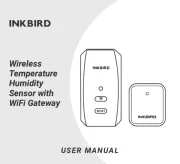
7 Juli 2025
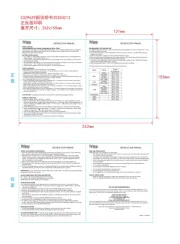
16 Juni 2025
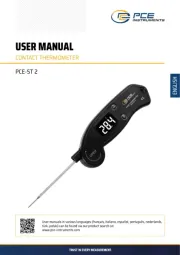
15 Juni 2025

15 Juni 2025
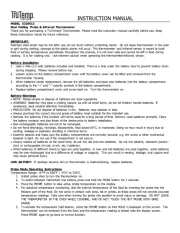
15 Juni 2025

11 Juni 2025

9 Juni 2025
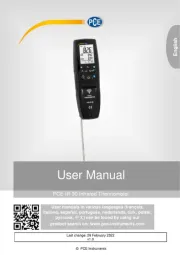
8 Mei 2025

3 Mei 2025